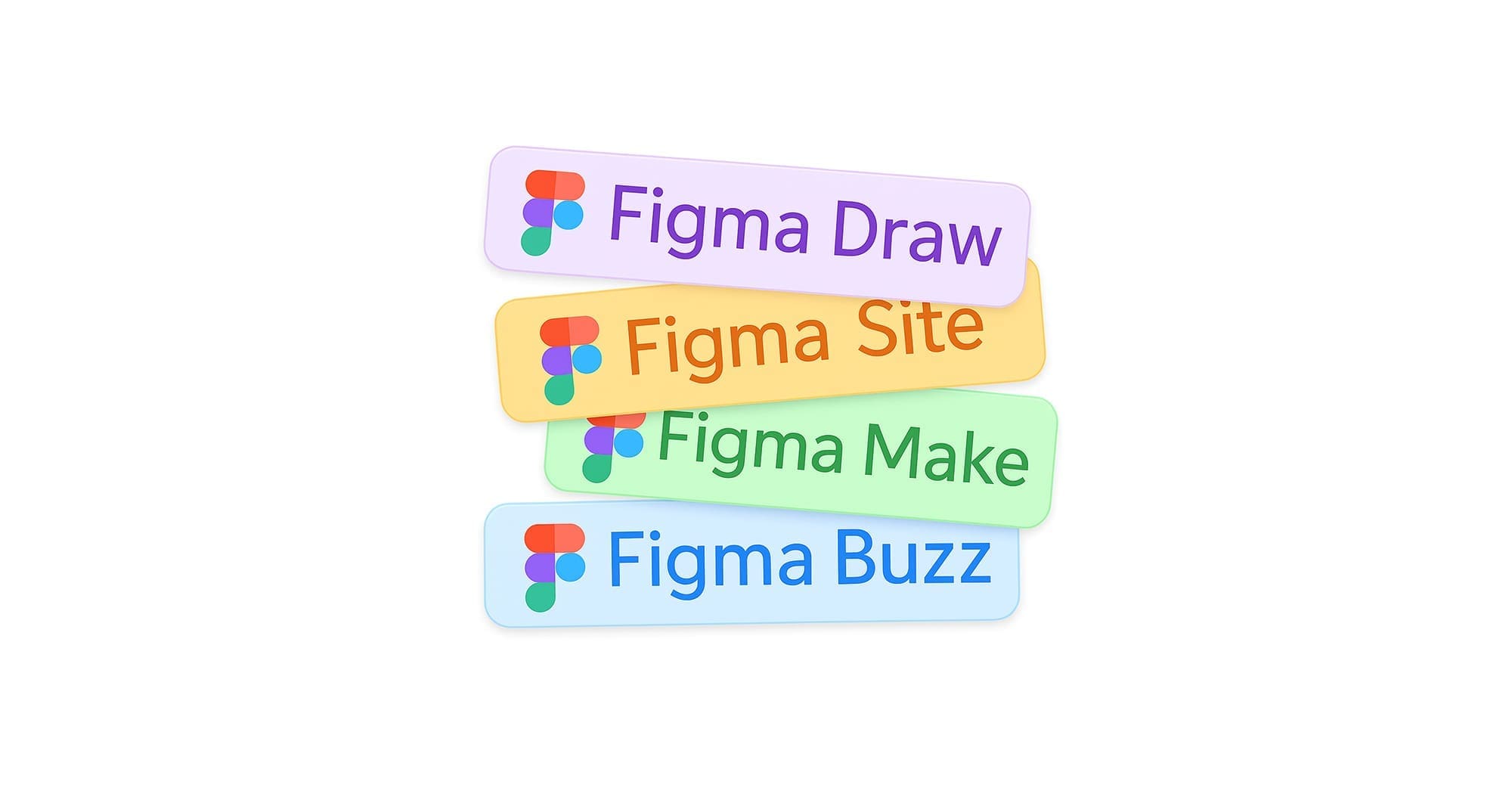Figma’s new AI features are reshaping the role of designers
Figma just launched a set of AI-powered tools that go beyond interface design. With this update, it’s clear: Figma wants to be the all-in-one platform for designers—whether you’re shipping a landing page, building an internal tool, or posting on social media.

What’s new in Figma?
- Figma Draw – High-precision vector illustration, similar to Adobe Illustrator, now directly inside Figma.
- Figma Site – No-code site publishing, replacing tools like Framer and Webflow.
- Figma Make – Build advanced internal tools like dashboards, directly from design files.
- Figma Buzz – Quick design creation for social media, inspired by Canva.
Why this matters?
The design industry has been moving toward faster, simpler workflows. We’ve gone from spending hours on manual exports to using tools that automatically remove backgrounds or upscale images.
Now, we’re entering a phase where entire products—websites, tools, marketing content—can be created and shipped directly from a single design file.
You can write a prompt. Figma does the rest.

Designers will work differently
The entry point for designers is shifting. Learning Photoshop, Illustrator, or After Effects is no longer required to ship real work. With Figma’s AI, you can go from idea to launch in the same tool.
Senior designers will likely stay with Adobe’s tools—because they’re fast with them, and because large companies still require structured, standards-based file delivery. These tools remain essential for pixel-perfect or compliance-heavy design work.
But if Adobe is like coding from scratch, Figma is like using modern frameworks: faster, cheaper, and more accessible.
A clear split is coming
This shift will create two distinct paths:
- Tool-first designers who use Figma for everything—graphics, websites, product design, even social media assets.
- Traditional designers who stick with the Adobe Suite for higher control, brand-level precision, and enterprise-level needs.
This divide won’t just be about preference—it will shape how projects are staffed, how clients hire, and how studios deliver work.
Pricing and access
Expect new pricing tiers in Figma that unlock the full set of AI tools. That’s the direction the platform is heading. More features, but also more separation between free and pro-level access.
The one-tool designer
One designer today can take on the work of an entire team. They can design, build, publish, iterate, and promote—without ever switching platforms. Figma is giving designers the ability to cover:
- Visual design
- UX/UI
- Development (through no-code tools)
- Content creation
- Product thinking
That’s not a theoretical future. That’s the new standard.

Will designers lose their job?
No. They’ll just do more.
The fear that AI will replace designers is overstated. What we’re seeing instead is a shift in the type of work designers can take on. With the right tools, a single designer can now produce what used to take an entire team. That means more autonomy, more variety, and more ownership.
Smaller companies might reduce team sizes—they simply won’t need five people when one person using AI can deliver end-to-end. But this won’t apply to larger, well-established organizations.
Clients with high expectations and larger budgets—like global brands or luxury companies—will continue to rely on traditional design teams using legacy tools. There’s a reason for that: precision, compliance, and consistency.
Luxury brands like Louis Vuitton are not about to produce advertising campaigns or animated banners in Figma. They’ll still go through creative agencies, using Adobe tools and pixel-perfect workflows, because brand integrity matters more than speed. Every curve, shadow, and transition is part of the visual code of those brands.
So no—designers aren’t being replaced. But the scope of their work is evolving fast. The tools are more powerful. The expectations are higher. And the job is starting to look very different.
Share article on



